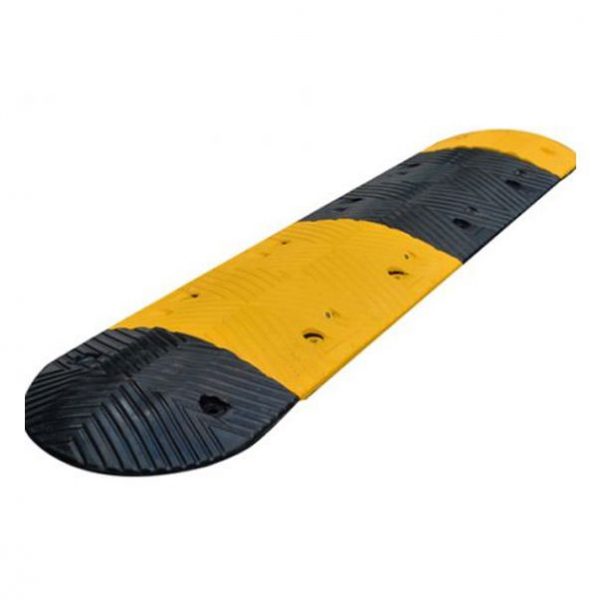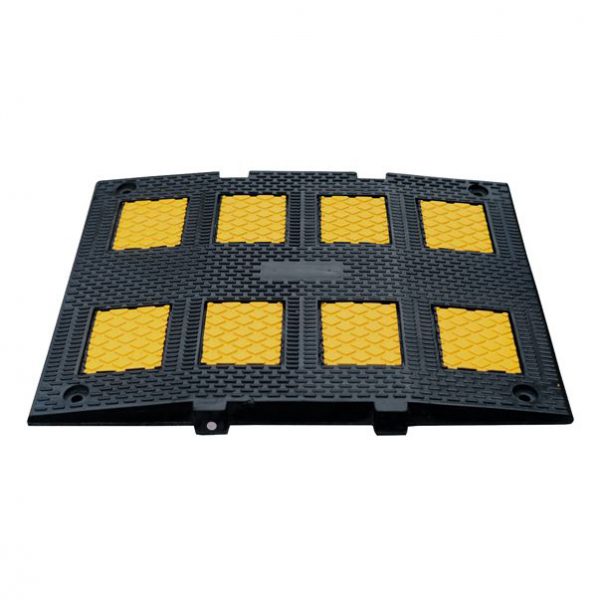- Difference between Speed Bumps and Speed Humps: Speed bumps are usually taller and more aggressive, designed to slow vehicles significantly. Speed humps, on the other hand, are longer and less steep, causing a gentler reduction in speed.
- Alternatives to Speed Bumps: Alternatives include speed cushions, speed tables, raised crosswalks, and chicanes, which aim to achieve traffic calming without the abruptness of speed bumps.
- Making Your Own Speed Bump: While it’s possible to create DIY speed bumps using materials like concrete or rubber, it’s essential to ensure they meet safety standards and local regulations.
- Removable Speed Bumps: Yes, there are removable speed bumps available, often used in temporary traffic control situations or for events where traffic calming is needed temporarily.
- Driving Fast Over Speed Bumps: It’s not advisable to drive fast over speed bumps, as it can damage your vehicle, cause discomfort, and defeat the purpose of traffic calming.
- Reasons for Speed Bumps vs. Speed Humps: The choice between speed bumps and humps often depends on the desired level of traffic calming and the specific road conditions.
- Removing Speed Bumps: Speed bumps may be removed if they prove to be ineffective, cause excessive wear on vehicles, or lead to noise complaints from residents.
- Impact on Tires: Repeated high-speed crossings of speed bumps can damage tires over time, leading to premature wear and potential punctures.
- Speed Bumps: Fast or Slow? It’s better to drive slowly over speed bumps to minimize discomfort, vehicle wear, and the risk of losing control.
- Full Speed on a Speed Bump: Going full speed over a speed bump can cause damage to your vehicle, discomfort to passengers, and potentially result in losing control.
- Effectiveness of Fake Speed Bumps: Fake speed bumps can be effective in deterring speeding, but they may not provide the same level of traffic calming as physical speed bumps.
- Are Speed Bumps a Good Idea? Speed bumps can be an effective tool for reducing speeding in residential areas, school zones, and parking lots, but their use should be considered carefully.
- Cost of Installing a Speed Bump: The cost varies based on materials, location, and labor, but it can range from a few hundred to a few thousand dollars per speed bump.
- Lifespan of Rubber Speed Bumps: Rubber speed bumps can last anywhere from 5 to 10 years or more, depending on factors like traffic volume and weather conditions.
- Speed Humps at 30 mph: Speed humps designed for 30 mph zones typically have a gentler profile and are spaced farther apart compared to those used in slower zones to accommodate higher speeds while still promoting traffic calming.
- Inventor of Speed Bumps: Speed bumps were not invented by a single individual. They evolved over time as a traffic calming measure. Their use can be traced back to various municipalities and transportation engineers who sought ways to slow down vehicles in specific areas to enhance safety.
- Types of Speed Bumps: There are several types of speed bumps, including:
- Traditional Speed Bumps: These are the common, raised rectangular or circular bumps on the road designed to slow vehicles down significantly.
- Speed Humps: These are longer and less abrupt than traditional speed bumps, designed to reduce speed more gradually.
- Speed Tables: These are wider and flatter than speed bumps, typically found at pedestrian crossings, and designed to slow traffic while providing a level surface for pedestrians.
- Speed Cushions: These are speed-reducing devices with gaps to allow emergency vehicles with wider wheelbases to pass unaffected.
- Mini Speed Bumps: Smaller and less aggressive than traditional speed bumps, often used in parking lots and private roads.
- Rubber Speed Bumps: Made of rubber, these are more flexible and can be temporary or permanent traffic calming solutions.
- Virtual Speed Bumps: These use visual or auditory cues to create the illusion of a speed bump, encouraging drivers to slow down.
- Milled Speed Reducers: These are grooves or ridges cut into the road surface to create a rumbling effect when vehicles pass over them, encouraging slower speeds.
Each type of speed bump serves a specific purpose and is chosen based on factors such as traffic volume, speed limits, and the desired level of traffic calming.
These are the common types of speed bumps, and their effectiveness varies depending on the situation and the goals of traffic management.
Functions of Speed Bumps:
- Traffic Calming: Speed bumps are primarily designed to slow down vehicles, especially in areas where excessive speed poses a safety risk. They force drivers to reduce their speed when approaching the bump.
- Pedestrian Safety: Speed bumps are often used near pedestrian crossings and school zones to enhance safety by encouraging drivers to drive at safer speeds, reducing the risk of accidents involving pedestrians.
- Residential Zone Control: In residential areas, speed bumps help maintain a quieter and safer environment by discouraging speeding and through traffic.
- Parking Lot Safety: Speed bumps in parking lots and garages help regulate vehicle speeds, preventing accidents and ensuring a safer environment for pedestrians.
- Traffic Management: Speed bumps can be strategically placed to manage traffic flow, control congestion, and reduce the risk of accidents at intersections or high-traffic areas.
- Controlled Entry/Exit: Speed bumps are used at entry and exit points of private properties or facilities to control the speed of vehicles entering or leaving the premises.
Benefits of Speed Bumps:
- Improved Safety: One of the primary benefits of speed bumps is enhanced safety. They reduce the risk of accidents by slowing down vehicles, especially in areas where vulnerable road users, such as pedestrians and cyclists, are present.
- Traffic Speed Reduction: Speed bumps effectively reduce vehicle speeds, which is essential in areas where speeding is a concern, like residential neighborhoods, school zones, and areas with heavy foot traffic.
- Noise Reduction: Slower-moving vehicles generate less noise, contributing to a quieter and more peaceful environment, particularly in residential areas.
- Deterrence of Through Traffic: Speed bumps can deter drivers from using certain streets as shortcuts, preserving the tranquility of residential neighborhoods and reducing congestion.
- Lower Accident Severity: Even if accidents occur in areas with speed bumps, they often result in lower injury severity due to reduced speeds.
- Cost-Effective: Compared to some other traffic calming measures, speed bumps are often a cost-effective solution for managing traffic and improving safety.
- Customization: Speed bumps come in various sizes and types, allowing for customization based on specific traffic management needs and speed limits.
- Environmental Benefits: Slower speeds achieved through speed bumps can lead to reduced emissions and fuel consumption, contributing to environmental conservation.
- Pedestrian Comfort: Speed bumps create safer environments for pedestrians by slowing down vehicles near crosswalks and pedestrian zones.
- Community Satisfaction: Speed bumps often receive positive feedback from residents and community members concerned about road safety and quality of life
Is it bad to go over speed bumps fast?
Despite what many people think, going over speed bumps fast is not recommended. There are several reasons why it’s bad to drive over speed bumps to fast.
You may be surprised to learn that speed bumps can damage your car severely if driving over it to quickly. If you’re not careful, you could cause major damage to your tires, steering, and exhaust system.
Also, if you hit a speed bump at a high enough velocity, you can cause significant damage to your underside and suspension components. Which can result in costly repairs. If you don’t pay attention to speed bumps, you could cause many issues such as:
- Damage on tires
- Car body damage
- Affected suspension
Going over speed bumps at high speeds will ruin your tires. They will push out from under you and cause you to lose contact with the road. Your tires won’t be able to absorb the impact of these jolts while traveling extremely fast. You’ll end up with a ruined vehicle! And if you’re without skid plates, you’re more susceptible to damage to these parts.
In addition to causing damage to your vehicle, it can also lead to a damaged suspension and loose parts. In fact, a broken shock can cause your tires to lose contact with the road, and this can compromise the safety of your vehicle.
The end result are not pretty, so it’s better to avoid hitting a speed bump while traveling at high speeds. When going over a speed bump, you have to be very careful. Aside from damaging your car, you can also endanger other drivers and pedestrians.
That’s why it’s important to avoid bumps at all costs. This way, you’ll avoid causing an accident or a blowout. If you’re not careful, you’ll end up with a smashed front end or damaged tires.



